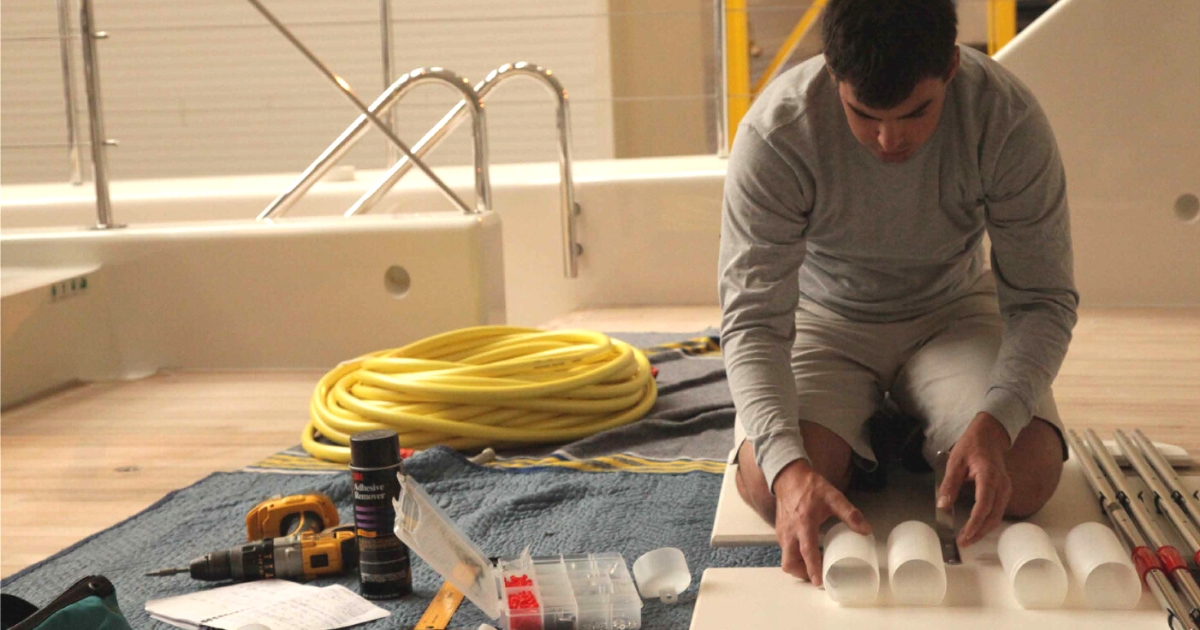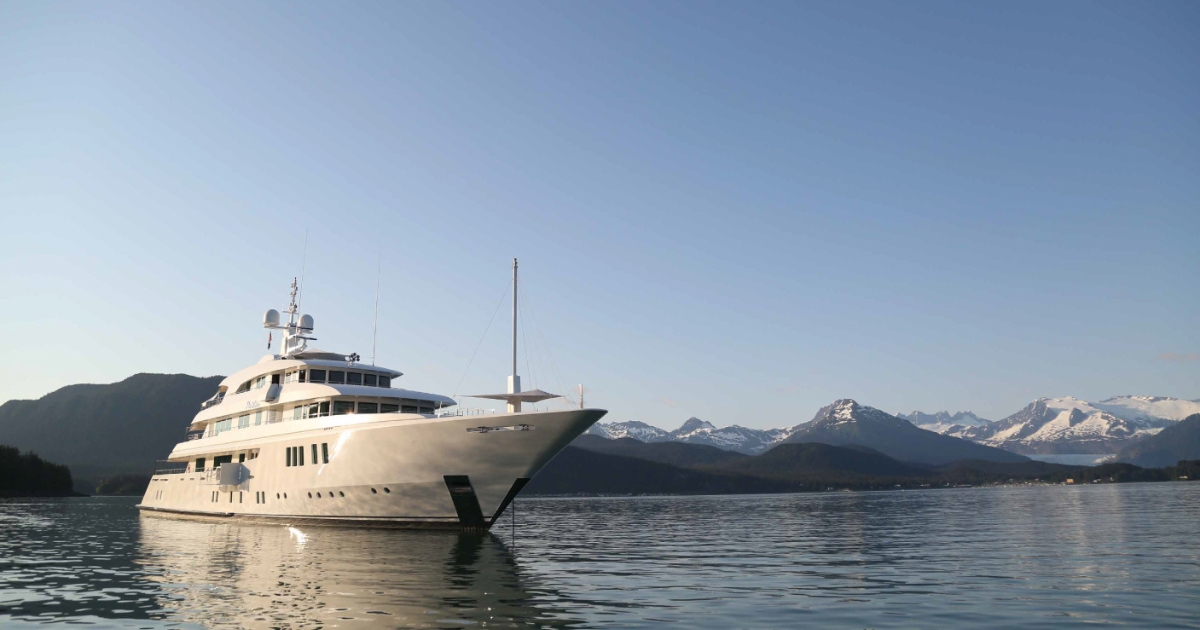A Quick and Easy Guide to Superyacht Deck Careers

For those looking to enter the superyacht industry from the outside, a career on deck represents the ultimate escape from the drudgeries of a 9-to-5 office job, thanks to its winning combination of sunlight, fresh air, physical activity and travel.
From deckhand, to bosun, to chief officer, all the way up to superyacht captain, there are ample opportunities for progression within a fulfilling and unique career which can be lifelong if you play your cards right. But you might be wondering, how do you navigate the career ladder from scrubbing teak to steering a multi-million dollar vessel?
Here, we present a quick and easy guide to deck careers, with some help from the recently-launched careers guidance platform, Academy by Ephemeris, whose comprehensive deck pathway clearly lays out the steps you need to climb in order to reach your goals.
Indeed, as Alex Freeman, a former yacht chief officer with 16 years of ocean experience says: “If I was currently looking for my first deck position without any qualifications, Academy by Ephemeris would be the perfect platform to help me figure out exactly what I needed to do in order to get there.”
Deckhand: The day to day
As the entry point for a deck career, the deckhand’s primary responsibility is cleaning and maintaining the exterior of a yacht as a member of the deck team. Headed up by the bosun, the deck team assists in docking operations, drives the tenders, launches and stows toys, supervises guests’ watersports activities and supports the interior crew when needed.
Working as the most junior member of the deck team, there will inevitably be a lot of dirty work. In other words, be ready for a lot of cleaning and polishing when the owner and guests are not on board. Whether that is scrubbing teak, polishing stainless steel, or cleaning cushion covers, you will be tasked with keeping the boat looking its most beautiful at all times.

How do I become a deckhand? Qualifications and training
As outlined on the Academy by Ephemeris deck pathway, before you become a deckhand, or take on any crew position, you are required to have STCW Basic Safety Training and be able to produce a ENG1 medical certificate to ensure that you can evidence being both safe and medically fit enough to perform your role. Alongside these bare minimum requirements, there are also numerous additional qualifications you can consider working towards in order to help you scale the deck career ladder.
These include a National Powerboat Certificate, a VHF Radio Operator Course and a MCA Yacht Rating Certificate, with some larger motor yachts also requiring a certificate in Proficiency in Designated Security Duties (PDSD) for those who have security duties on ISPS-compliant yachts above 500GT (gross tonnage). For more information, visit the Academy by Ephemeris website.
Bosun: The day to day
If you’ve banked at least two years as a deckhand/lead deckhand and have natural leadership qualities, the next logical step is to apply for a bosun position. As the most senior member of the deck department, you will oversee and manage all on-deck operations, including docking and anchoring procedures, the maintenance of tenders, toys and other onboard equipment, and delegate tasks on a daily basis to more junior crew members.
Reporting directly to either the first officer or the captain, the bosun serves as a vital link between the deck department and the bridge, helping to ensure that the day-to-day operations of the vessel run as safely and smoothly as possible.
The bosun is also in charge of safety on deck, meaning that it is vitally important that you are well versed in the yacht’s safety procedures and have all of the relevant qualifications in this area.
How do I become a bosun? Qualifications and training
Although there is no single prescriptive list of qualifications for a bosun position, alongside the STCW certificate, ENG1 Medical Certificate and PB2 or IYT Tender Driver License, generally you will also be required to hold an RYA Yachtmaster Offshore or IYT Master of Yachts <200GT as a bare minimum.

Another important benchmark for anyone seeking a bosun position is the Efficient Deck Hand (EDH) qualification. Taking on OOW (Officer of the Watch) modules such as navigation and radar will also help you to make a positive impression when applying for this role, as will gaining any further qualifications in water sports tuition, scuba diving or an AEC (Approved Engine Course). For up-to-date ideas on how to boost your prospects, check out Academy by Ephemeris’ deck pathway.
First/Chief Officer: The day to day
As the captain’s second in command, the first/chief officer has wide ranging responsibilities which will keep you constantly on your toes - in a good way! This includes overseeing all deck operations and maintenance, managing deck crew, watchkeeping, as well as performing various administrative duties.
The first officer is also required to have up-to-date knowledge of all onboard safety procedures in case of an emergency, and must be able to step up to manage the bridge and navigation systems in the captain’s absence.
How do I become a First/Chief Officer? Qualifications and training
By the time you reach this level on the deck careers pathway, it is all about securing the relevant ‘Certificate of Competency.’ To qualify for a ‘Chief Mate Certificate of Competency’, you must either hold an OOW (Officer of the Watch) Yacht <3000 GT, II/1 Certificate of Competency or have completed all of the requirements for this qualification.
In addition, you also need to be in possession of either an IYT Master of Yachts Unlimited or an RYA Yachtmaster Ocean, as well as fulfilling numerous other requirements, such as holding a valid Seafarers Medical Fitness Certificate.
Since this role comes with a high level of people management, prospective chief officers should also ensure that they work on their interpersonal skills through courses such as the MCA approved ‘Human Element Leadership and Management Course’, so that they can evidence the ability to both effectively manage and lead crew.

Captain: The day to day
Finally, after successfully scaling the deck careers pathway, we have reached the much revered role of superyacht captain. Alongside actually driving the boat, captains are often described as the ‘CEOs’ of a boat, as they are responsible for running every aspect of a vessel.
Their broad-ranging list of daily tasks includes hiring and managing crew, controlling onboard costs, planning and executing voyages to suit the requirements of owners and charter guests, organising repairs and maintenance, ensuring that the boat adheres to all international, flag and port state regulations, maintaining the highest levels of safety and security on board - and the list goes on!
Another way of looking at this position is that the captain is ‘chief problem solver’, on a yacht, tasked with ensuring that all onboard issues (whether crew-based, practical or logistical) are resolved as efficiently and smoothly as possible, so that the owner and their guests can enjoy the highest possible levels of service during their time at sea.
How do I become a Captain? Qualifications and training
As with the Chief Mate position, in order to secure a position as a superyacht captain you will need to have the relevant Certificate of Competency: in this case, the Master Yachts <500GT/<3000GT Certificate of Competency. Unsurprisingly, this has a highly thorough process to back it up, including a plethora of licenses which must be secured and a rigorous oral examination to truly put you through your paces.
Furthermore, as you would expect from a position with so many facets to it, it takes far more than just having the relevant qualifications to secure your first appointment as a superyacht captain. Other important factors which are considered for a captain’s position include the amount of time spent on board yachts, geographical and yacht handling experience, people management skills, the degree of financial common sense and many more.
Since you will be reporting either to the owner’s representative, or the owner themselves, each owner will require a captain to precisely fit their vessel size and itinerary, as well as their own personality, meaning that it is a myth that there is a certain ‘type’ of person suited to becoming a captain.
Nevertheless, although qualifications alone won’t necessarily get you all the way to locking in your first captain’s role, being able to show evidence of additional or specialist courses such as ‘Advanced Training for Ships Operating in Polar Waters’ and ‘Helicopter Landing Officer Training’ can also help you make an impression on an owner and stand out from the crowd in what can be extremely tough and competitive interviews.
To explore Academy by Ephemeris’ deck pathway for yourself, visit the company’s website here.


Post your comment
You cannot post comments until you have logged in.
Login to post a commentComments
No one has commented on this page yet.
RSS feed for comments on this page | RSS feed for all comments